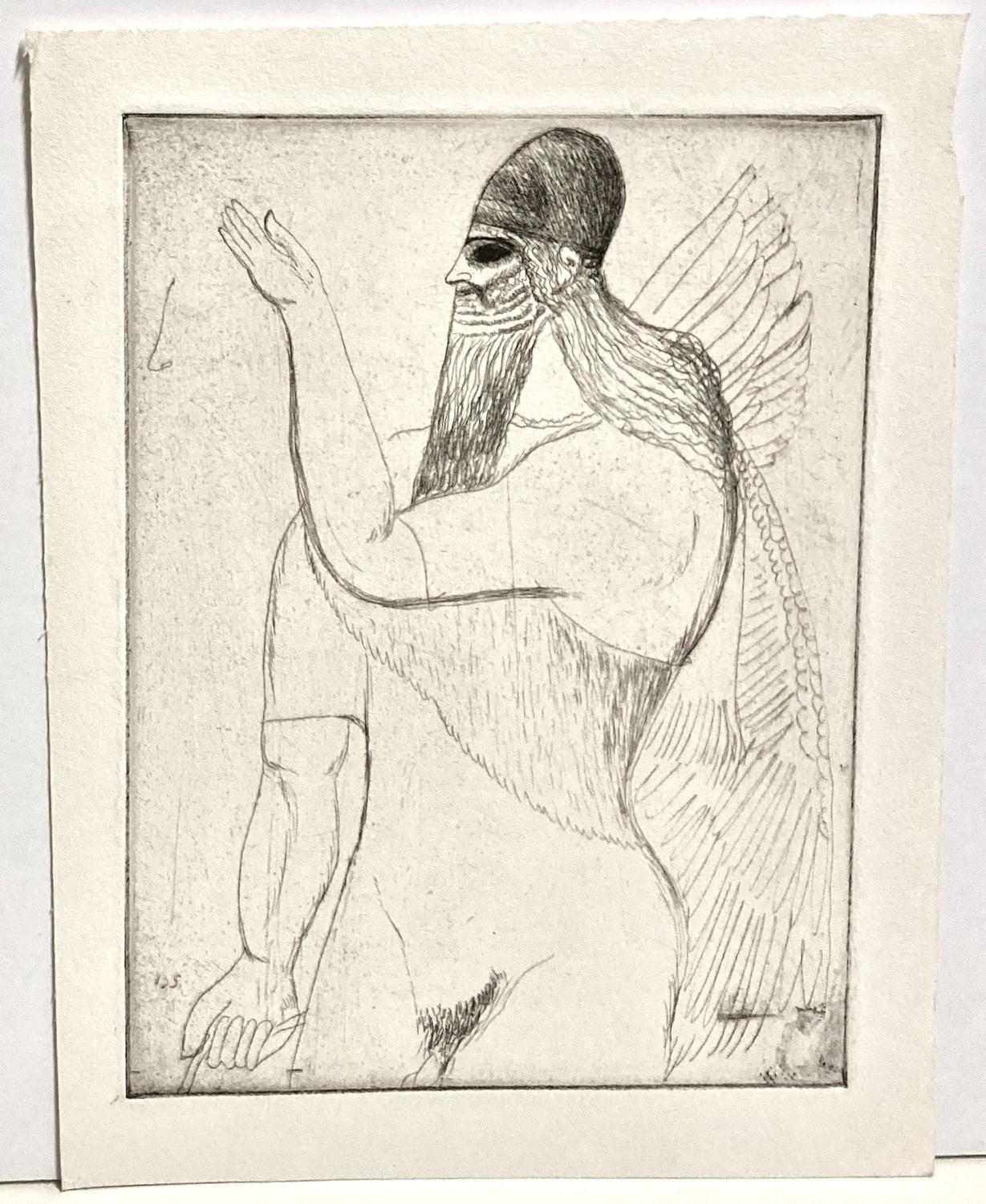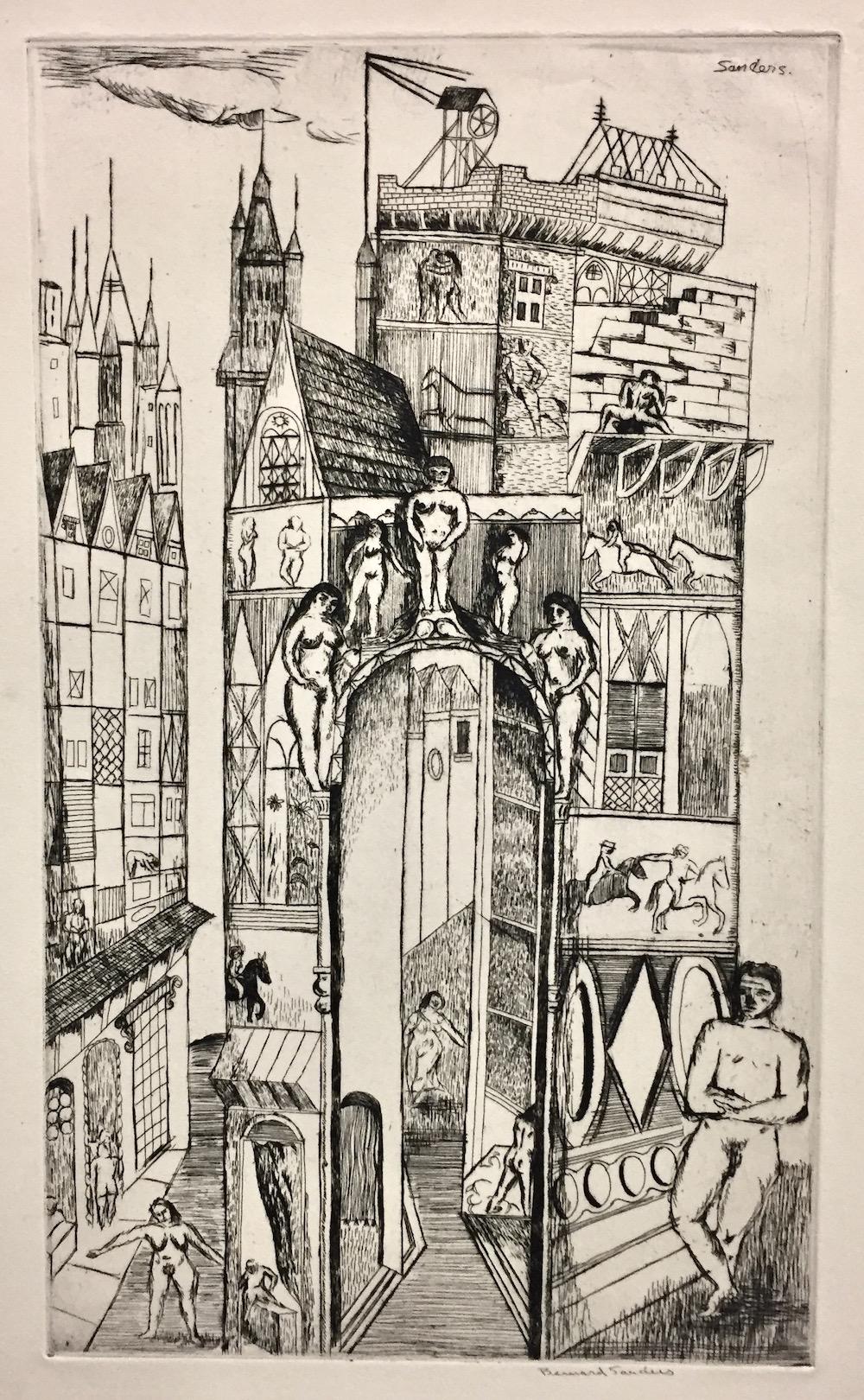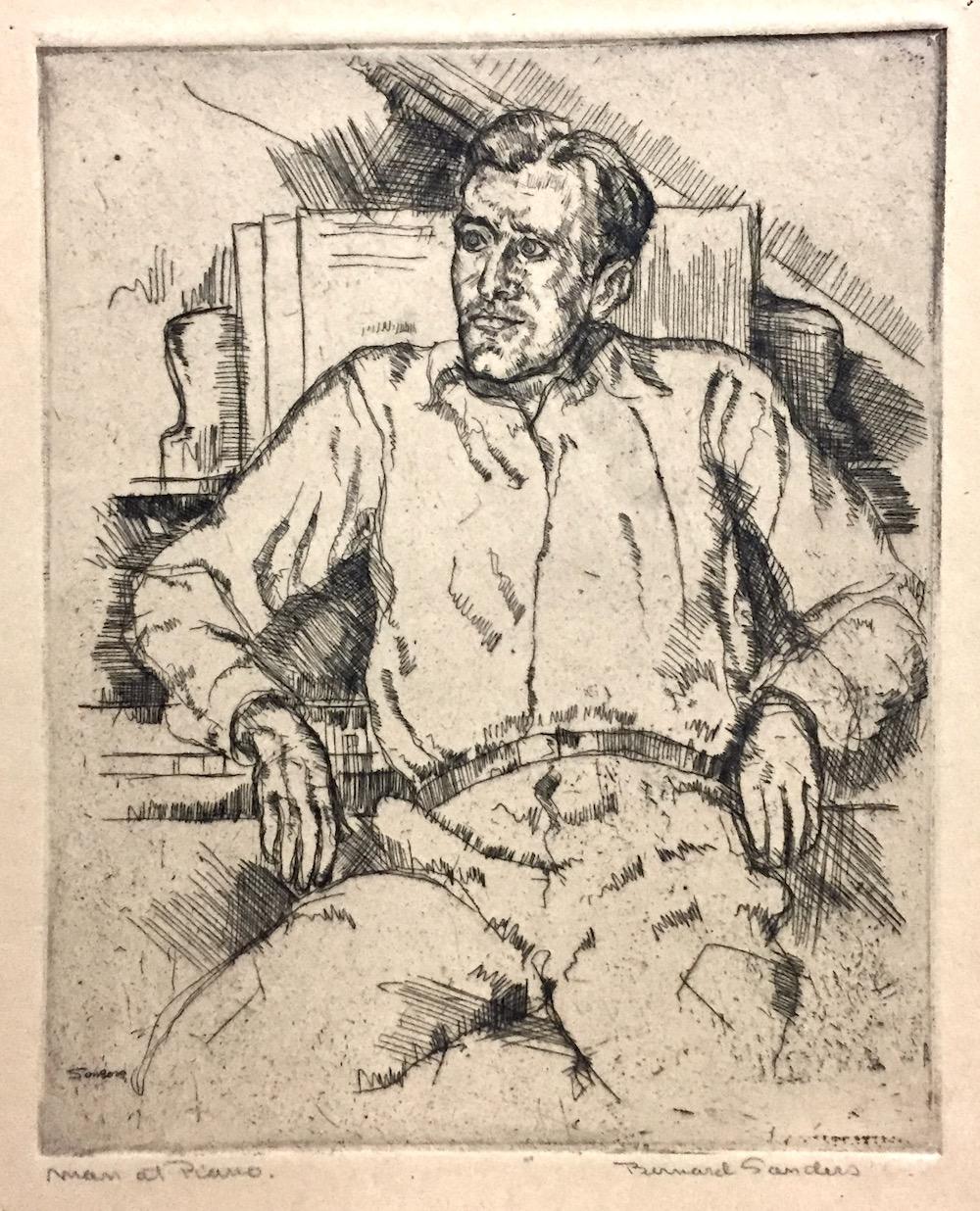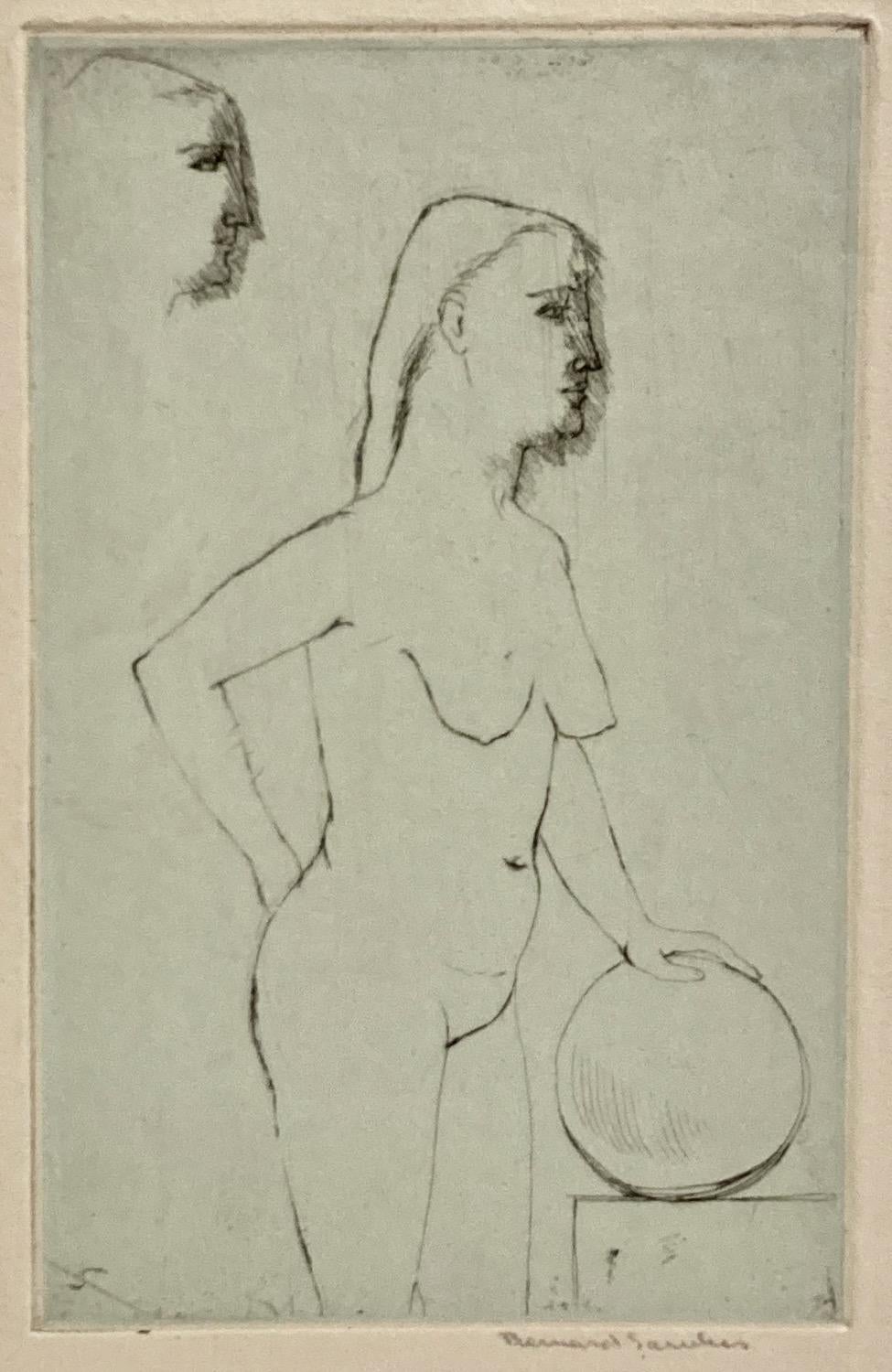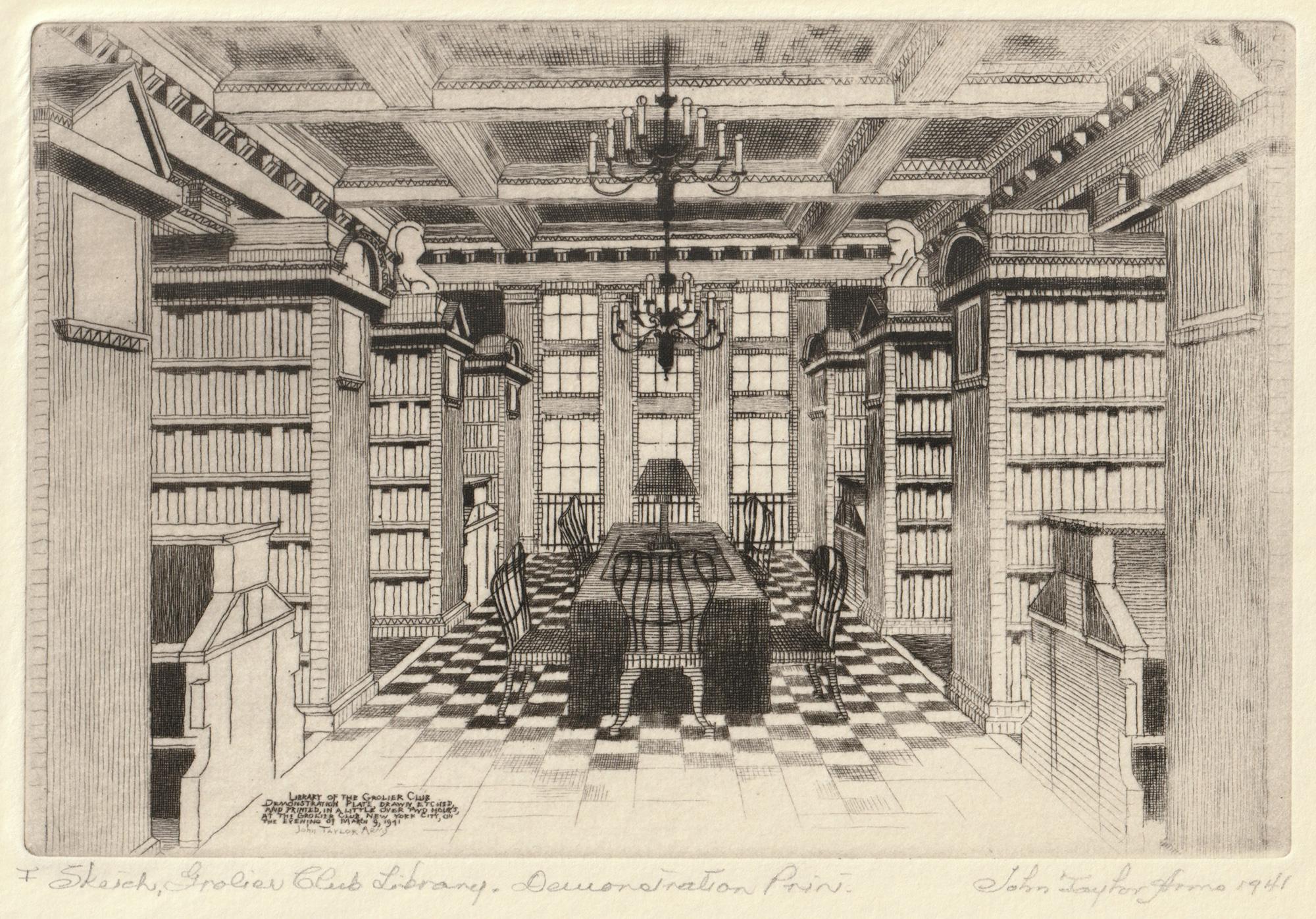Items Similar to William P. Hicks, Circus
Want more images or videos?
Request additional images or videos from the seller
1 of 5
William P. HicksWilliam P. Hicks, Circus1938
1938
About the Item
William P. Hicks has drawn everything about the circus that will fit in the plate. The main figure is an aerial act with a woman balancing on rope held by a figure on the floor. There are bears on bicycles and skates, dancing clowns in funny clothes, an elephant, and a tightrope walker with a pole.
The medium is etching of course, but there's also lots of use of aquatint. It is signed and titled in pencil. It may have been made for the WPA (there a not very official label on the reverse) but I don't find it in any listings.
- Creator:William P. Hicks (1895 - 1950, American)
- Creation Year:1938
- Dimensions:Height: 12 in (30.48 cm)Width: 9 in (22.86 cm)
- Medium:
- Movement & Style:
- Period:
- Condition:The issues are fairly inconspicuous. There's a soft crease at the upper right. On the reverse there's a label (possibly WPA). It's glued on at the four corners. That glue shows through in the image lower middle, about 1 1/4 inch up from bottom edge.
- Gallery Location:New York, NY
- Reference Number:1stDibs: LU141028365782
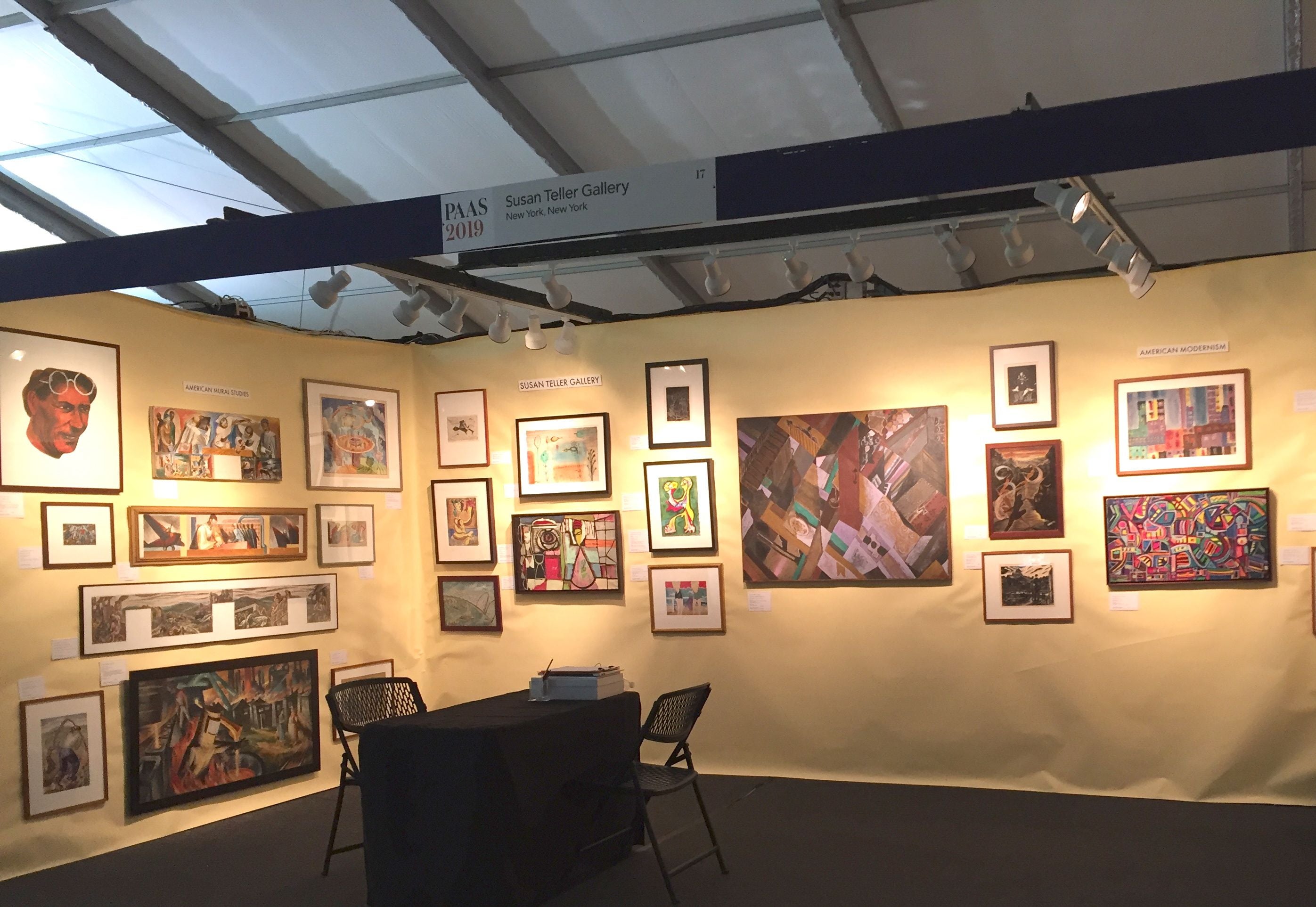
About the Seller
5.0
Platinum Seller
These expertly vetted sellers are 1stDibs' most experienced sellers and are rated highest by our customers.
Established in 1988
1stDibs seller since 2020
89 sales on 1stDibs
Typical response time: 3 hours
- ShippingRetrieving quote...Ships From: New York, NY
- Return PolicyA return for this item may be initiated within 7 days of delivery.
More From This SellerView All
- Bernard Sanders, (Mesopotamian Figure)Located in New York, NYClearly Sanders was looking at ancient Mesopotamian figures. Even the elaborate feathered wings can be found there -- made about 5000 years ago! There's an initial 'S' in the plate...Category
Early 20th Century American Modern Interior Prints
MaterialsEtching, Drypoint
- Bernard Sanders, (Fantastic City)Located in New York, NYThis extravagant subject is a clear exception in the oeuvre of Bernard Sanders. Signed in pencil; interestingly signed in the plate at the upper right ...Category
Early 20th Century American Modern Interior Prints
MaterialsEtching
- Bernard Sanders, Man at PianoLocated in New York, NYFor a print that's nearly one hundred years old it feels very contemporary. Signed and titled in pencil. Besides the etching I think there is some false biting that adds tone here.Category
Early 20th Century American Modern Interior Prints
MaterialsEtching
- Bernard Sanders, (Nude Woman with Orb)Located in New York, NYSander's figures are captivating. Here a women stands facing right, just touching, and holding still, a globe shape, on a flat surface. It was difficult getting the color to show p...Category
Early 20th Century American Modern Interior Prints
MaterialsDrypoint, Etching
- Bernard Sanders, (Lovers)Located in New York, NYClearly Sanders (1906-1967) was a master at these minimalist figurative prints. It's all about atmosphere and tension. Perhaps reflecting the print here, (Lovers), he, in fact, w...Category
Early 20th Century American Modern Interior Prints
MaterialsEtching, Drypoint
- (Four Women at Hat Store)Located in New York, NYThis is such an interesting image. Are there 'Four women'? Is the head on the upper right from a hat store or is she another person in the scene. And what a...Category
Mid-20th Century American Modern Figurative Prints
MaterialsEtching
You May Also Like
- The Grolier Club Library (Sketch), Demonstration PrintBy John Taylor ArmsLocated in Middletown, NYEtching on light yellow cream laid paper with deckle edges, full margins. Inscribed in the image "Library of the Grolier Club, Demonstration Plate, Drawn, Etched and Printed in a Li...Category
Mid-20th Century American Modern Interior Prints
MaterialsLaid Paper, Etching
- The Silent PieBy John SloanLocated in Middletown, NYEtching on cream wove paper, 5 3/8 x 4 1/4 inches (135 x 107 mm), signed in the plate, lower right. Third state (of 3), from the novel The Flower Girl, vol. 2. by Paul de Kock. In go...Category
Early 20th Century American Modern Figurative Prints
MaterialsHandmade Paper, Etching
- Points of Departure II: Nijinsky VariationsBy Peter MiltonLocated in Middletown, NYPoints of Departure II: Nijinsky Variations Robert E. Townsend, 1996 Resist-ground etching and engraving on BFK-Rives paper, 24 x 38 inches (618 x 965 mm), full margins. Signed, ti...Category
1990s American Modern Figurative Prints
MaterialsEtching, Engraving
- Interiors I: Family Reunion — A penetrating scene with a hidden homage to EadweaBy Peter MiltonLocated in Middletown, NYInteriors I: Family Reunion 1984 Resist ground etching and engraving on BFK Rives wove paper, 20 x 36 inches (501 x 913 mm), full margins. Signed, titled, dated and numbered 49/175 in pencil, lower margin. In excellent condition with minor mat tone. A luminous, rich, and well-inked impression of this haunting image, with astonishing detail and depth. Framed handsomely under museum grade glass with archival materials in a solid wood frame with silver finish. [Milton 107] Intended to be a stand alone image in its inception, Family Reunion ended up spawning seven additional images, and became a sort of Primo Pensiero in the sprawling, masterpiece suite now known as Interiors. The suite took eight years to complete, and consists of works of varying format, psychological intensity, and subject matter. The thematic darkness in the eight images waxes and wanes, and Milton intentionally included several interlude works to lighten the tension he felt while composing several of the darker images. The first two in the series, Family Reunion, and Hotel Paradise Café, were meant to be companion pieces. The equilibrium of each composition is anchored on a central brooding figure; a man (perhaps based on a Thomas Eakins portrait of the American anthropologist Frank Hamilton...Category
1980s American Modern Figurative Prints
MaterialsEtching, Engraving
- Interiors VII: The Train from MunichBy Peter MiltonLocated in Middletown, NYInteriors VII: The Train from Munich Robert E. Townsend, 1991. Resist ground etching and engraving with hand refinement in charcoal, pencil, stabilo, and eraser on BFK Rives white wove paper, 20 x 36 inches (507 x 914 mm), full margins. Signed, titled, dated and numbered 51/175 by the artist in pencil, lower margin. A brilliant, inky impression with luminous light and gradient tones. In excellent condition with one extremely minor and superficial spot of light tan adhesive residue on the verso, unobtrusive and not visible on the recto, with no other visible defects. With the blind stamp of the printer, Robert E. Townsend in the lower left margin. An especially fine impression in superb condition. [Milton 113]. When asked about this work in particular, Milton expressed that his favorite images were his darkest images, in theme, mood, and in ink. Milton, who has said that his work is infused with a postmodern awareness of the past, has focused here in a deeply personal way on a segment of history that continues to haunt us all. The work, published in 1991, evokes one of the darkest periods of European history, the eroding and erasing of European culture under fascism, and the eventual total loss of humanity. The Train from Munich is an especially relevant and emotional work for Milton, who created the piece for his wife, Edith, who escaped Munich in 1939 as a child on the fabled Kinderstransport. The Kinderstransport was a desperate rescue effort on the part of the British government to save as many Jewish children as possible by railway before borders closed on the precipice of the Second World War. Children left their parents behind, and boarded the trains alone, leaving the impending doom of Nazi Germany, they arrived in Great Britain as refugees. More than 10,000 children escaped the holocaust via the Kinderstransport. In Train from Munich, the image itself holds an almost immeasurable amount of symbolism; each inch of the matrix is a successful effort to confront this history in a way that is poignant through a series of motifs. We see the Café disappearing into a ghostlike memory of the past, an allegory to the disintegration of culture, while through the windows we can see a rampant, snarling dog; a portrait of Hitler's shepherd, Blondi. Blondi isn't the only notable figure in the composition. Milton has pointed out that the fading figure of the doorman at the Hotel Metropole is modeled after the artist and intellectual Marcel Duchamp, and the face of the young girl peering...Category
1990s American Modern Interior Prints
MaterialsABS, Charcoal, Engraving, Etching
- Chris Ware New Yorker Cartoonist Limited Edition Thanksgiving Print NYCBy Chris WareLocated in Surfside, FLThis is one print – printed in full color on 15" x 20" heavy cream-colored paper. It is from a limited edition series of 175, the portfolio is hand numbered and hand signed by Chris Ware. the individual prints are not. The page with the hand signature is included here as a photo for reference only it is not included in this sale. Franklin Christenson "Chris" Ware (born December 28, 1967), is an American cartoonist known for his Acme Novelty Library series (begun 1994) and the graphic novel Jimmy Corrigan, the Smartest Kid on Earth (2000) and Building Stories (2012). His works explore themes of social isolation, emotional torment and depression. He tends to use a vivid color palette and realistic, meticulous detail. His lettering and images are often elaborate and sometimes evoke the ragtime era or another early 20th-century American design style. Ware often refers to himself in the publicity for his work in self-effacing, even withering tones. He is considered by some critics and fellow notable illustrators and writers, such as Dave Eggers, to be among the best currently working in the medium; Canadian graphic-novelist Seth has said, "Chris really changed the playing field. After him, a lot of [cartoonists] really started to scramble and go, 'Holy [expletive], I think I have to try harder.'" While still a sophomore at UT, Ware came to the attention of Art Spiegelman, who invited Ware to contribute to Raw, the influential anthology magazine Spiegelman was co-editing with Françoise Mouly. Ware has acknowledged that being included in Raw gave him confidence and inspired him to explore printing techniques and self-publishing. His Fantagraphics series Acme Novelty Library defied comics publishing conventions with every issue. Ware's art reflects early 20th-century American styles of cartooning and graphic design, shifting through formats from traditional comic panels to faux advertisements and cut-out toys. Stylistic influences include advertising graphics from that same era; newspaper strip cartoonists Winsor McCay (Little Nemo in Slumberland) and Frank King (Gasoline Alley); Charles Schulz's post-WWII strip Peanuts and the cover designs of ragtime-era sheet music. Ware has spoken about finding inspiration in the work of artist Joseph Cornell and cites Richard McGuire's strip Here as a major influence on his use of non-linear narratives. He is one of the great practitioners who have elevated the graphic novel style along with, Shepard Fairey, Ben Katchor and Robert Crumb. Quimby the Mouse was an early character for Ware and something of a breakthrough. Rendered in the style of an early animation character like Felix the Cat, Quimby the Mouse is perhaps Ware's most autobiographical character. Ware's Building Stories was serialized in a host of different venues. It first appeared as a monthly strip in Nest Magazine. Installments later appeared in a number of publications, including The New Yorker, Kramer's Ergot, and most notably, the Sunday New York Times Magazine. Building Stories appeared weekly in the New York Times Magazine from September 18, 2005 until April 16, 2006. A full chapter was published in Acme Novelty Library, number 18. Another installment was published under the title "Touch Sensitive" as a digital app released through McSweeneys. The entire narrative was published as a boxed set of books by Pantheon in October 2012. Ware was commissioned by Chip Kidd to design the inner machinations of the bird on the cover of Haruki Murakami's novel The Wind-Up Bird Chronicle. In 2011, Ware created the poster for the U.S. release of the 2010 Palme d'Or winning film Uncle Boonmee Who Can Recall His Past Lives by Thai director Apichatpong Weerasethakul. Awards and honors Over the years his work garnered several awards, including the 1999 National Cartoonists Society's Award for Best Comic Book for Acme Novelty Library and Award for Graphic Novel for Building Stories. Ware has won numerous Eisner Awards and multiple Harvey Awards. In 2002, Ware became the first comics artist to be invited to exhibit at Whitney Museum of American Art biennial exhibition. With Will Eisner, Jack Kirby, Harvey Kurtzman, Robert Crumb and Gary Panter, Ware was among the artists honored in the exhibition "Masters of American Comics" at the Jewish Museum in New York City, New York, from September 16, 2006 to January 28, 2007. His work was the subject of solo exhibitions at the Museum of Contemporary Art, Chicago in 2006 and at the University of Nebraska's Sheldon Museum of Art, in 2007. Many famous artists have done covers for the New Yorker Magazine including, Saul Steinberg, Maira Kalman, Art Spiegelman, Francoise Mouly, Charles Addams, Peter Arno, Roz Chast, Ed Koren...Category
Early 2000s American Modern Figurative Prints
MaterialsColor
